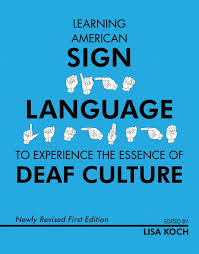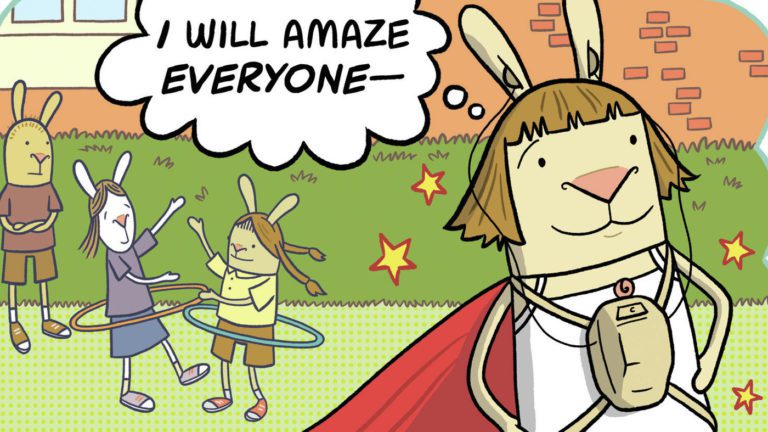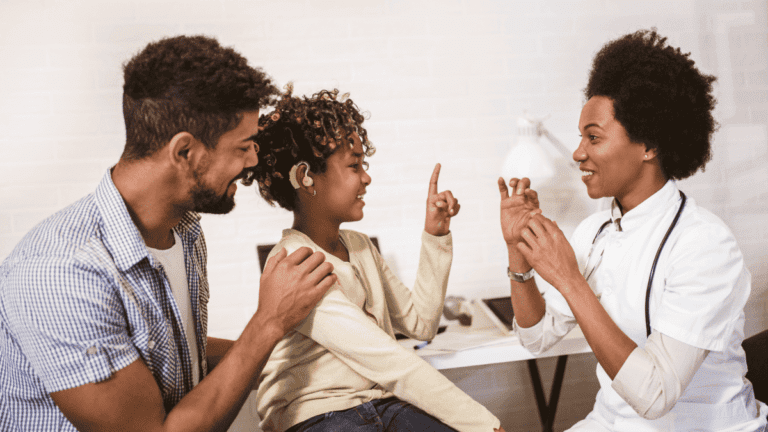Deaf Culture My Way
Twenty-eight years ago, my ENT specialist said, “Your hearing loss is progressive. You will become deaf one day.” With that warning in mind, I began taking ASL classes in Burbank, California. I was lucky to have talented teachers that included Stephanie Johnson, ASL/English Bilingual Coordinator at Marlton School for the Deaf, Lisa Chahayed, ASL teacher at Pierce College, and Troy Kostur, Deaf actor and director. These people not only taught me the basics of ASL, but showed me the rich culture that deaf people embrace.
After my initial Burbank indoctrination to American Sign Language, I enrolled in more rigorous classes at Pierce College where Deaf Culture was part of the curriculum. I soon realized that the culture I grew up in embraced sound while this new culture depended on sight. One of my first homework assignments was to experience a Deaf Event. My wife, Jila, and I went to services at Temple Beth Solomon of the Deaf where we met a small group of friendly people headed by Jan Seeley, a sign-language interpreter. When we returned home, I wrote up my observations and got an A.
After Jila’s passing six years ago, I decided to get more involved with the Deaf Community, so I became a member of TBS. I also joined a deaf group meeting up once a week at a pizza restaurant in North Hollywood, where many high school and college students learning ASL would meet to fulfill their own Deaf Event assignments. Seeing how poorly most of them signed, I took it upon myself to reinforce their ASL skills. Eventually, we moved the group to Fat Sal’s in Encino, but that came to a screeching halt.
The pandemic ended my relationship with my deaf friends, placing all of us in isolation. No more Deaf bowling and morning breakfasts with Deaf friends. But I still had so much to learn about the culture, that is why I read Deaf Culture Our Way: Anecdotes from the Deaf Community by Roy, Samuel, and Thomas Holcomb. Many of the anecdotes I read reminded me of things that happened to me since losing my hearing at the ripe old age of forty-four.
Like many deaf people in the book, I often feel the dashboard of my car to make sure it has started. And at a noisy family get together I show off my “super-power” by taking off my hearing aids for blessed silence. I also capitalize on my deafness when visiting my brother in Atlanta. Before boarding a plane, I let the gate keeper know I’m deaf and she always lets me on first. (Deafness has its perks.)
When going to a restaurant, deaf people pick one with good lighting, and if I’m with hearing friends or relatives, I like to go early before the place becomes too noisy. I found interesting anecdotes in Deaf Culture Our Way that mirrored my experiences. For example, one day I’m shopping at Ralph’s and unbeknownst to me a woman says, “Pardon me.” With my back to her, I’m clueless of her presence. She gets frustrated and slams her cart into mine and stomps off. All she had to do was tap me on my shoulder—very acceptable behavior in Deaf Culture, but not in the culture of sound.
We’ve all been to a store where we take a number and wait for it to be called. During the pandemic, it’s tough to know when a number is called because everyone is wearing a mask. Since I won’t know when my number will be announced, I watch the person with the number before mine like a hawk.
Jila lost her hearing as a toddler to meningitis, a common cause of deafness in children. She could not only lip read her native tongue, Farsi, but was proficient in English, too. One day she was sitting around a table with her sister, brother, mother, sister-in-law, and a few aunts. Everyone was laughing, including Jila. When people spoke, she nodded. I couldn’t figure out how she could follow a four-way conversation. Impressed, I stood in back of her brother and signed, “You really understand them?” Jila smiled, and signed, “No.” We laughed until our sides hurt to the wonderment of the hearing people around the table.
The virus that took my hearing also affected my balance. However, the neighbor downstairs from my condo isn’t privy to that information. She complains about my dog, Scribble’s barking, which I can only hear if the dog is close to me. One day I get an email from my HOA threatening me with a fine. Why? The neighbor complained about all the noise I make with the added insult that I walk like an elephant.”
In Deaf Culture Our Way I read about a doctor with a solution to deafness: Stop deaf people from having children. This “brilliant” physician failed to do his research, for if he had, he would have learned only 5-10% of deafness is inherited, and the bulk of deaf children are born to hearing parents. Perhaps he should insist hearing people stop reproducing?
I’m continuously amazed at the fact that many hearing parents of deaf children refuse to learn ASL and insist their deaf child be immersed in a culture of sound. If these children attend a school for the Deaf, then Deaf Culture is learned—the only culture transmitted by an institution and not by the parents.
Deaf Culture Our Way reinforced my own experiences. For example, when I first told my friends I had become deafened by a virus and they were compelled to repeat themselves, quite a few avoided me as if being deaf were contagious. However, a few remained my friends showing patience of a saint. (Thank you, Joe Bock.)
If you have a deaf relative, friend, or just interested in Deaf Culture, or learning ASL, read Deaf Culture Our Way: Anecdotes from the Deaf Community. It’s an eyeopener.
Michael Thal is the author of Goodbye, Tchaikovsky a novel about deafness.







As always, insightful…
This was very helpful for those of us who may be insensitive because of ignorance.
Thank you for the generosity with which you write….
Great. I just ordered “Deaf Culture Our Way”from Amazon and I look forward to reading it. It’s noble that you volunteer your time at Fat Sal’s to help other people; hope you can get back to it soon, after the pandemic.
Thank you Michael for sharing your anecdotes. So much to learn. Will definitely get the book.
Anjali